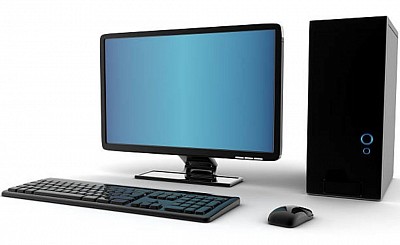Understanding the basic components of a computer
Introduction to computers
A computer is an electronic device that processes data to perform various tasks, from simple calculations to complex simulations and data analysis.
Central Processing Unit (CPU)
- The CPU is the brain of the computer, responsible for executing instructions and performing calculations.
- It consists of the control unit, arithmetic logic unit (ALU), and registers, and it interprets and executes instructions from software.
Memory
- Memory in a computer refers to random access memory (RAM) and read-only memory (ROM).
- RAM is volatile memory that temporarily stores data and instructions for the CPU to access quickly during operation.
- ROM is non-volatile memory that stores essential instructions to start the computer and manage its hardware.
Storage Devices
- Storage devices, such as hard disk drives (HDDs) and solid-state drives (SSDs), store data and programs for long-term use.
- HDDs use spinning disks to store data magnetically, while SSDs store data in flash memory, providing faster access times and improved reliability.
Input and Output Devices
- Input devices, such as keyboards and mice, allow users to input data into the computer.
- Output devices, such as monitors and printers, display and produce the results of computer processing for users.
Motherboard
- The motherboard is the main circuit board in a computer, connecting all the components and providing communication between them.
- It houses the CPU, memory, storage interfaces, expansion slots, and other essential components.
Operating System
- The operating system is the software that manages computer hardware and provides a user interface for interacting with the computer.
- It coordinates the execution of software applications and manages memory, storage, and input/output operations.
Conclusion
- Understanding the basic components of a computer is essential for individuals seeking to comprehend how computers function and how to troubleshoot common issues.
- A holistic understanding of computer components enables individuals to make informed decisions when upgrading or repairing computers.
HARDWARE DEVICES OF A COMPUTER
Hardware devices of a computer refer to the physical components that make up a computer system. Here are some key hardware devices commonly found in computers:
1. Central Processing Unit (CPU): The CPU is the primary component responsible for executing instructions and performing calculations.
2. Motherboard: The motherboard is the main circuit board that connects and holds together all the essential components of a computer, including the CPU, memory, storage, and expansion slots.
3. Memory (RAM): Random Access Memory (RAM) allows the computer to temporarily store and access data quickly. It is crucial for running applications and multitasking.
4. Storage Devices:
- Hard Disk Drive (HDD): An HDD is a traditional storage device that uses magnetic disks to store data.
- Solid State Drive (SSD): An SSD is a faster and more reliable storage device that uses flash memory for data storage.
- Optical Drives: CD/DVD/Blu-ray drives are used to read and write optical discs.
5. Graphics Processing Unit (GPU): The GPU is responsible for rendering and displaying images, videos, and animations. It is especially important for graphical-intensive applications and gaming.
6. Display Monitor: The monitor is the output device that displays visual information and allows the user to interact with the computer visually.
7. Keyboard and Mouse: These input devices are used to input data and commands into the computer.
8. Sound Card and Speakers: The sound card converts digital audio signals into analogue signals, while speakers output the audio.
9. Network Interface Card (NIC): The NIC is responsible for connecting the computer to a network, allowing it to access the internet and interact with other devices.
10. Power Supply Unit (PSU): The PSU supplies electrical power to the computer and its components.
11. Cooling System: Computers often have fans or cooling systems to prevent overheating, ensuring optimal performance and longevity.
12. Expansion Cards: These cards can be added to the motherboard to provide additional functionality, such as graphics cards, sound cards, or network cards.
13. Peripheral Devices: These include printers, scanners, external storage devices (e.g., USB drives), webcams, and other devices that connect to the computer to enhance its capabilities.
These are just a few examples of hardware devices commonly found in computers. The specific hardware configuration can vary based on the intended use, specifications, and customization of the computer system.

